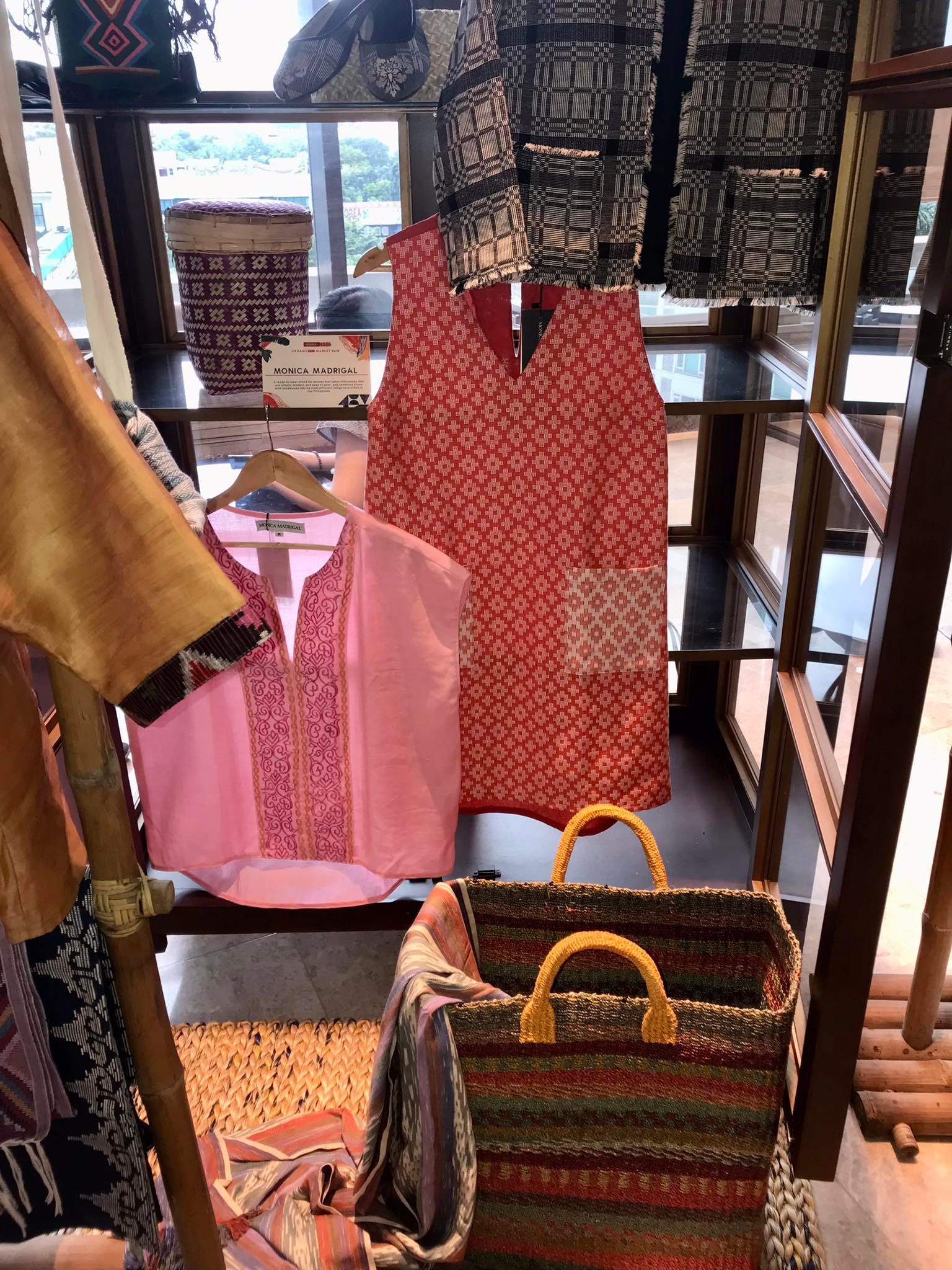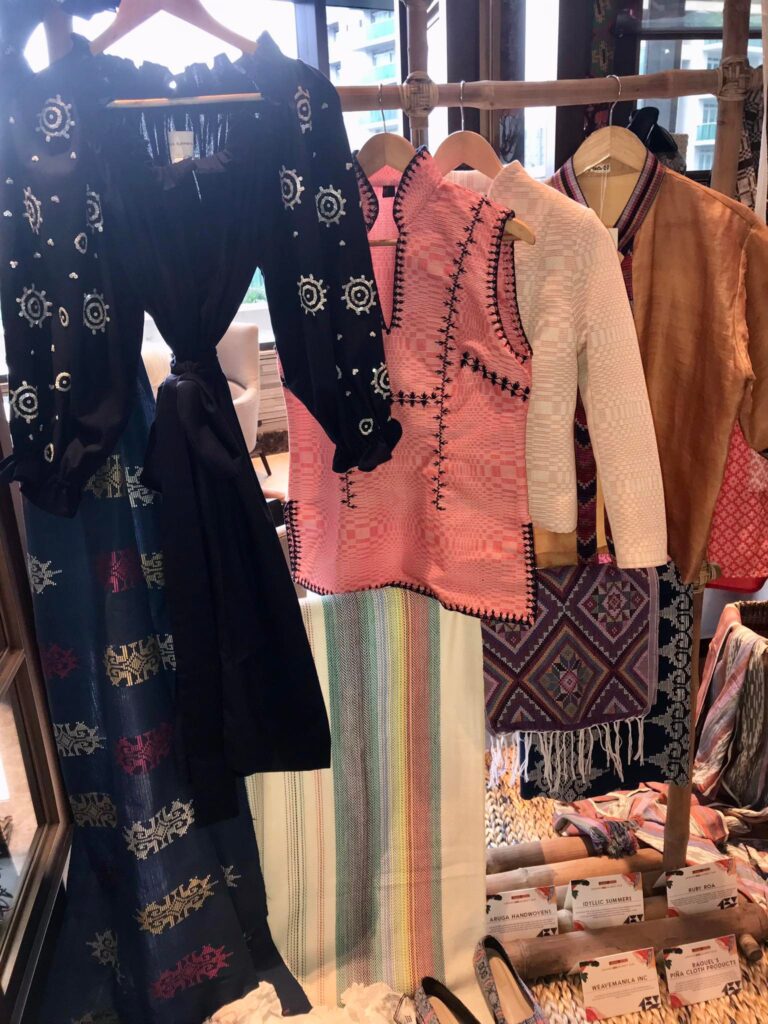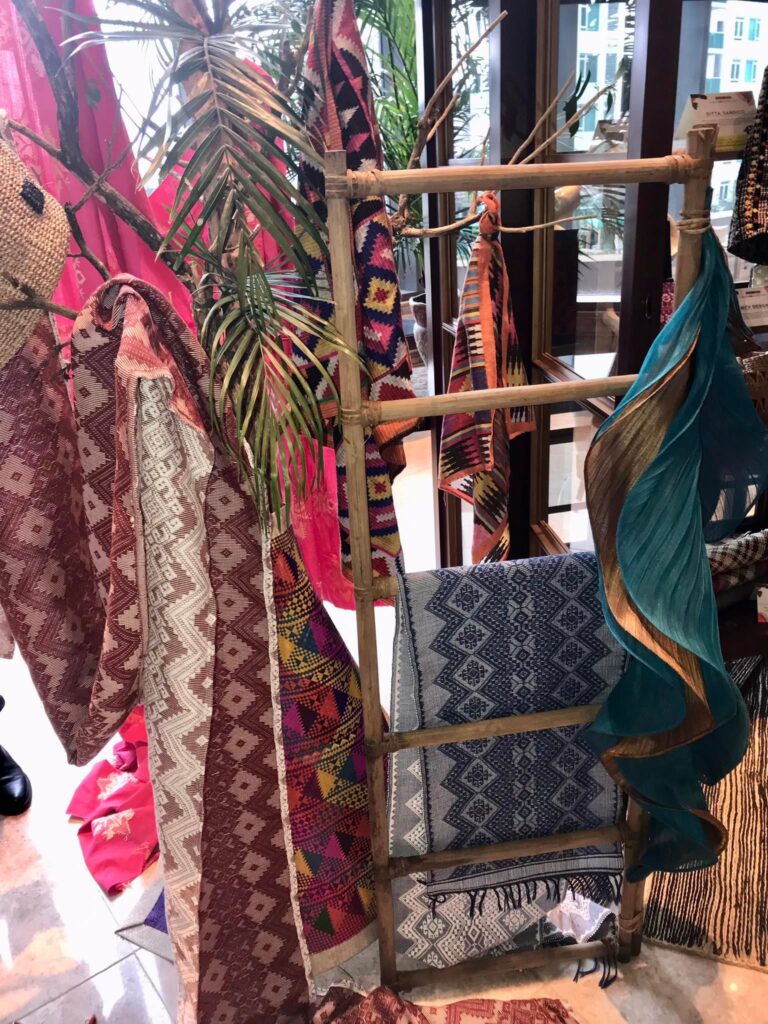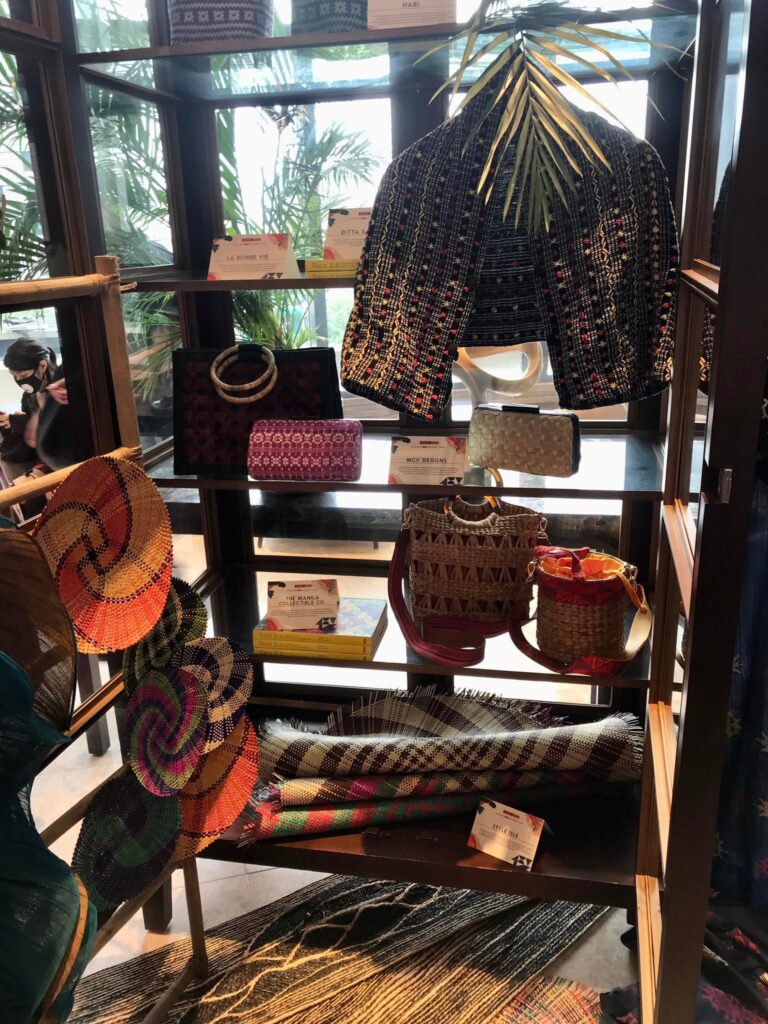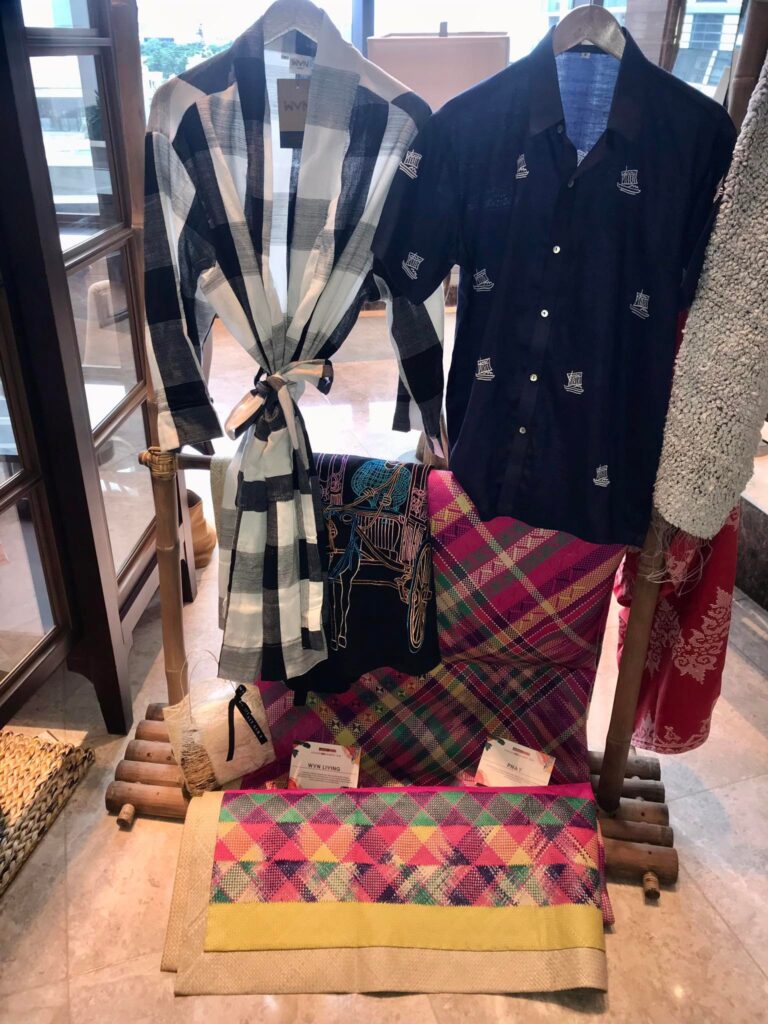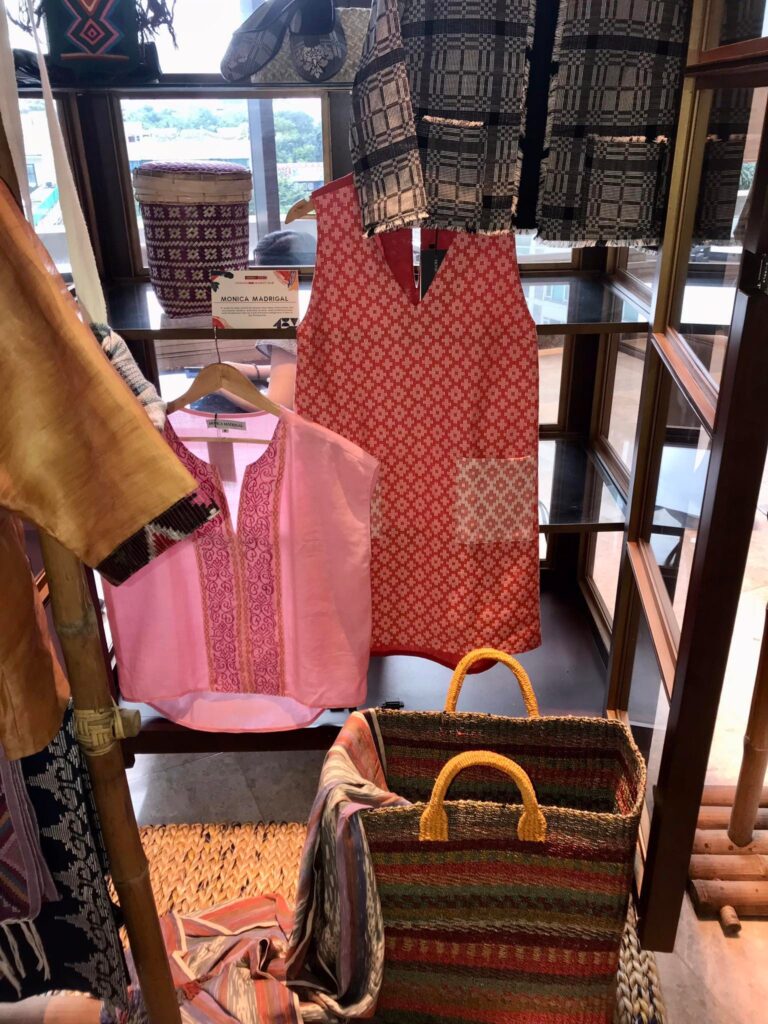As the lead organization tasked to promote the art and craft of hand-weaving in the country, HABI: The Philippine Textile Council’s efforts go beyond the much-awaited Likhang HABI Market Fair.
Artisanal fairs providing a platform for the country’s traditional crafts as well as the hundreds of nameless artisans behind them have become much-awaited annual events. But people behind Likhang HABI Market Fair have already been laying the groundwork way before “gawang Filipino” products (Philippine-made) became fashionable.
Since its inception in 2009 and the staging of its first Likhang HABI Market Fair a year later, HABI: The Philippine Textile Council has endeavored to carry its mandate of promoting the art and craft of hand-weaving and, in the process, providing countless Filipino artisans all over the country with a viable and steady market to sell their hand-woven products.
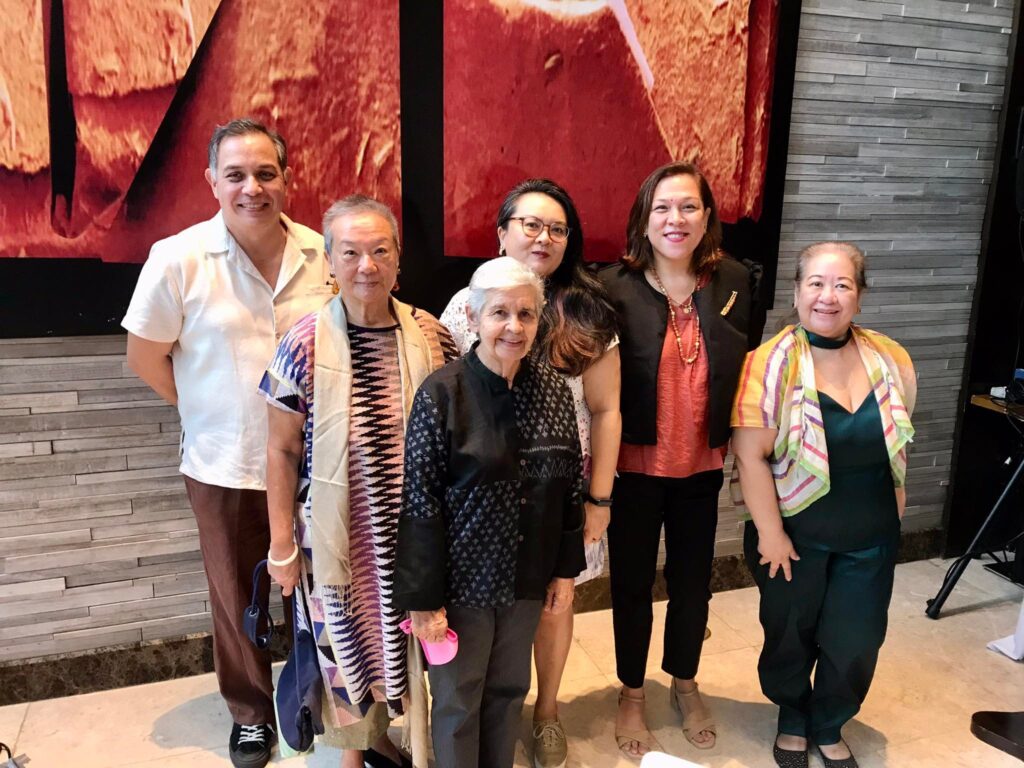
Although the council’s most high-profile project, the annual Likhang HABI Market Fair, which this year will again be staged at the Glorietta Activity Center from October 14 to 16, 2022, has become a must-go-to event to a growing number of enthusiasts in love with anything woven, unique, and indigenous—from fabrics to ready-to-wear clothes, home accessories to furniture pieces—there’s more to HABI’s efforts, in the same way that there’s more to the yearly fair it stages.
For starters, says Maribel Ongpin, the council’s founding chairman, Likhang HABI Market Fair is the first of its kind to be staged anywhere in the country. “We’re the first in this line of promoting indigenous fabrics as fashion,” she says. “Second, while most of the other bazaars have reached a sophisticated level, we continue to go grassroots.”
In fact, most of the vendors who now participate in other fairs have started out with HABI. Many of them, even during the first two years of the pandemic, which saw the council staging its annual event for the first time online, still join the HABI-organized fair.
But simulating fashion is a mere byproduct of HABI’s work. Filipino weavers, without a doubt, are creative individuals on par with the best in the world. But not all of them are armed with the basics to expand and keep their individual enterprises going.
At its core, the council, apart from providing participants with a market and exposing them to a network of possibilities, tries to give each participant the financial knowhow so that they can figure out such basics as pricing and what the market wants.
“You bring them to the fair, especially first-timers, and they see for themselves the competition. They see what customers want,” says Ongpin.
As a non-profit organization, HABI doesn’t earn anything from its annual endeavor. Whatever percentage it charges from the gross income of each exhibitor is plowed back to cover basic expenses, including the staging of next year’s fair.
“The fair is one of HABI’s biggest fund-raising activities,” says council member Mia Villanueva. The Likhang Habi fair, through the generous support of Ayala Land and the Ayala Foundation, is held every year at Glorietta. Individual exhibitors still rent the space from HABI at very reasonable rates. Fledgling exhibitors, who are grouped together in a common section called the HABI booth, are also welcome to participate.
But whatever HABI generates from the fair basically covers space rental for next year’s event. For other activities like marketing and the production of books—three titles to date—featuring, among others, long-forgotten woven piña fabrics found in a museum abroad, and documentaries to further promote weaving, the council has had to rely on money from individual donors as well as grants from various institutions.
Likhang HABI also happens to be the only fair of its kind that stages the annual Lourdes Montinola Piña Weaving Competition, Ongpin declares. Starting this year, it has also added the Eloisa Hizon Gomez Abaca Competition to its roster of fair-related activities.
“This is our fifth year of holding the piña competition,” says Adelaida Lim, the council’s president. “And since we’ve had it, we’ve noticed that artisans working on piña have been leveling up.”
To promote another natural fiber indigenous to the country, which happens to be older than the piña, organizers will also start to train the spotlight this year on abaca-weaving. While piña-weaving will celebrate the works of artisans mostly from Aklan, abaca-weaving will highlight the works of weavers from Bicol and certain parts of the Visayas and Mindanao.
Winners of both contests, who will be judged by a panel of experts on Philippine textiles, processes and materials, will be announced during the fair.
As part of its advocacy work, HABI has also encouraged countless weavers to revert back to cotton-weaving through various means. Apart from sponsoring communities by providing them with source materials, the council has educated both weavers and consumers on the importance and premium of using cotton vis-a-vis polyester. For one, cotton is a natural fiber, while polyester is not only a synthetic fiber, but also an environmental pollutant.
“In the beginning, they stopped using cotton because they found it too expensive and less sturdy than polyester,” says council member Rambie Lim. “As they started using it with our support and encouragement, they eventually want to only weave using cotton.”
If you ask Mike Claparols, also a council member, HABI’s greatest contribution, he says, is to encourage a good number of weaving communities to revert back to using cotton. Before the gradual shift, 95 percent of these communities were using polyester.
Through HABI’s advocacy, cotton-farming has also experienced a gradual revival, benefitting not only weavers and consumers, but also the country’s cotton farmers.
“Second, another important contribution of HABI is educating the public,” adds Claparols. “A lot of consumers think that hand-woven fabrics are too expensive. Many try to bargain with weavers by asking for big discounts. What they don’t know is weaving is a learned skill that requires time and dedication to master.”
In HABI’s objective to shift mindsets, it has endeavored to show the general public the value behind hand-woven fabrics over and above readily available mass-produced power-loomed textiles. As products produced by hand, they’re labor-intensive, beautiful, and unique. Put another way, no two hand-woven pieces are exactly alike
By raising the overall awareness of these weaving communities, HABI has also been able to raise their credibility in the marketplace and among discerning Filipino consumers. Such a development invariably bring added value to their products.
As a keeper of records, HABI has also excelled in its task, producing three hardbound books so far. A fourth book, “Haboe,” which is Aklanon for to weave, is on its way. Rather than produce expensive coffee table books simply for show, Ongpin is proud of the fact that their books are more like affordable manuals ordinary people could access, gain ideas and draw inspirations from.
“Aside from publication, we’ve recently ventured into producing documentaries to communicate our mission and vision to a broader public,” adds Adelaida Lim. For its initial venture, HABI has focused on doing a documentary on piña, which premiered at the School of Oriental and African Studies, University of London.
From there, it was shown at the San Francisco Museum’s piña exhibit staged at the San Francisco Airport. Filipinos also got to see the 30-minute documentary at an exhibit at SM dubbed “Threaded Traditions: the Textiles of Panay Island.”
The council is currently working on three more documentaries, which it hopes to show to a bigger, more impressionable audience in schools and museums.
As the de facto representative of Filipino weavers’ interest, the council has also entered into a number of collaborations to further promote the art and craft. It has, for instance, an ongoing collaboration with the Philippine Fashion Coalition.
Finally, as the face and voice of Filipino weavers of indigenous fabrics, HABI stands tall as it carries the country’s flag abroad. As a member of the ASEAN Traditional Textile Symposium, HABI meets every other year with its counterparts from all over the region. This year, the eighth meeting will be hosted by Malaysia in September. A HABI delegation will attend.
“As a country, we carry important fibers like piña and abaca that are uniquely ours,” Ongpin concludes. “It’s very hard for any other country to compete with that. They might have other fibers, but ours are world-renowned. Since museums in the world feature them, they’re considered a legacy of Filipino craftsmanship, Filipino identity, and the Filipino nation.”
Catch Likhang HABI’s annual fair at the Glorietta Activity Center, October 14 to 16, 2022. For more information about HABI: The Philippine Textile Council, please call +63921 849-6974 or email support@habiphilippinetextilecouncil.com.

